KEEP THIS NEWSLETTER ALIVE!

visit irishnation.com to redeem this coupon
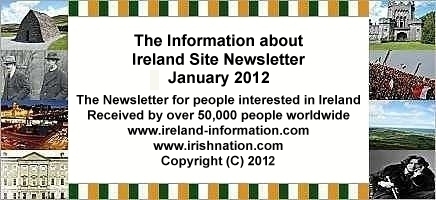
=============
IN THIS ISSUE
=============
=== News Snaps from Ireland
=== New Free Resources at the Site
=== Singin' the Blues by Mary McGinnis Bosman
=== The Hynes of Ireland by James Patrick Hynes
=== General Michael Collins by Captain Donal Buckley
=== YouTube Videos of Irish Interest
=== Shamrock Site of the Month: Celticattic.com
=== Gaelic Phrases of the Month
=== Monthly Free Competition Result
===========
FOREWORD
===========
Many thanks to all of the contributors to our
Ireland newsletter, This month we have a story
from Mary McGinnis Bosman, a history of the Hynes
families of Ireland and a military view on the
tactics of Michael Collins. Thanks to all.
We have also started a new monthly roundup of some
of the best YouTube videos of Irish interest for you
to enjoy.
Enjoy your FREE Ireland Newsletter!
Michael
P.S. Please DO FORWARD this Newsletter to a
friend or relative. If you have a website or Facebook
page or Blog (or whatever!) then you can help
us out by putting a link on it to our website:
www.ireland-information.com
Do tell your friends about us as this helps
to keep this newsletter free!
WE NEED YOUR HELP - CONTRIBUTE!
Got something to say? Don't keep it to yourself!
Why don't you submit an article for inclusion
in the next edition? Go here for more information:
https://www.ireland-information.com/newsletter.htm
Do you have access to a website? You can help to
keep this newsletter alive by adding a link to
any of our websites below:
https://www.irishnation.com
http://www.irishsurnames.com
https://www.ireland-information.com
http://www.allfamilycrests.com
http://www.irishpenpals.com
If you have an AOL or HOTMAIL account then you
may get better results by viewing this
newsletter online here:
https://www.ireland-information.com/jan12.htm
The only way that you could have been
subscribed to this newsletter is by filling
out a subscription form at the site whereupon
a confirmation notice would have been issued.
If you wish to unsubscribe then go here:
https://www.ireland-information.com/newsletter.htm
========================
NEWS SNAPS FROM IRELAND
========================
|
EU/IMF/ECB LOANS TO IRELAND TO CONTINUE The recent review of the terms of the loans being provided to Ireland by the EU, IMF and ECB has found that the targets for these loans to be continued are broadly being met by Ireland. Over the last two years successive Irish governments have implemented huge cutbacks in public spending as well as severely increasing taxation. The recession that followed the collapse in property prices impacted to such a large extent in Ireland that emigration and unemployment sky-rocketed. It was about this time that the Irish banking system began to implode with the subsequent 'bank guarantee' by the government being a pivotal moment. Fianna Fail were then voted out of office with Fine Gael and Labour taking control. The new government however has continued to implement the same policies as its predecessors, much to the dismay of much of the electorate who remain baffled at their unwillingness to be bold in the early days of their new administration. Despite warnings that no country has ever taxed its way out of a recession it seems that this is exactly what Ireland is trying to do. The decision making has apparently been moved from Dublin to Berlin in what some commentators starkly describe as a loss of sovereignty. The hugely inflated public sector wage bill is clearly a big part of the problem at the moment with Trade Unions entrenched in their positions and refusing to allow any further reduction in their members pay and conditions. With the Labour Party in coalition government it is clear that any assault on Public sector pay is going to be very difficult for Fine Gael to implement. 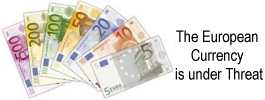
Against this background the EU/IMF and ECB have advanced huge 70bn Euro loans to the Irish government to allow it to continue paying its bills. The interest rate on these loans is punitive to the extent that some opposition TDs (members of the Irish parliament) have called for Ireland to default on its repayments and even to leave the eurozone itself and revert to an Irish currency. The prospects of this happening appear to have dissipated in recent weeks but there is also an increasing realisation in Ireland that the French and Germans, who are effectively running the Eurozone, are clearly only acting in their own self-interest by advancing loans to Ireland. An Irish loan default would be a disaster for the German and French banks who were owed billions by the Irish banks even before the new loans were advanced. With the story still being played out in Europe it remains to be seen if a second debt crisis in the EU can be averted. From an Irish perspective it is quite obvious now that Ireland's membership of the Eurozone and its adoption of the Euro currency has been an utter disaster. Had Ireland had control of its own currency during the property boom then it could have increased interest rates, cooling the property market and preventing at least the incredible scale of the downfall which nearly collapsed the Irish financial system. There is a growing euro-sceptic voice in Ireland which may yet get its change to be heard. The proposals to alter the EU Treaty to introduce new rules to try to prevent a repeat of the EU debt problems may necessitate a referendum in Ireland. It is by no means certain if any such referendum would be passed and if it was rejected then Ireland's membership of the Eurozone would be in question. Any referendum could essentially be a vote on Ireland's continued participation in the Euro currency, such are the high stakes now involved. FACEBOOK AND GOOGLE SET TO EXPAND IN IRELAND There was some encouraging news for the Irish economy with Internet giant Facebook announcing that it is to double its presence in Ireland. At least 60 new jobs are to be initially created with the social networking site preparing a significant recruitment drive. Google recently also took advantage of the depressed state of the Irish property market to snap up some prime office space in Dublin city centre last year. Ireland continues to punch above its weight in attracting the very best multi-national companies to its shores. NEW TV LICENCE FEES MAY TARGET TV-LESS HOMES The 160 euro Irish television licence is mostly used to provide funding to RTE, the national television station. Previously the fee has been charged based on the ownership of a television set but with the advent of the Internet programmes are now viewable on even a tiny mobile phone. The old system is thus set to be scrapped. 
In its place comes the possibility that a home or business may be charged a licence fee regardless of whether it even has a television. The bizarre possibility that remote rural houses or those who choose to live without television could still be charged the licence fee is to be addressed prior to the legislation being introduced by the government. O2 ARENA IN DUBLIN IS WORLDS FIFTH BEST ATTENDED Beating even the Madison Square Garden venue in New York the Dublin O2 arena (known locally as the 'Point') was the fifth best attended music venue in the world in 2011. It is a remarkable testament to the continuing attraction of Dublin and Ireland that huge international rock and pop music acts continue to perform in the country. The over 670,000 people who visited the O2 was even more than the previous year, when the country was still in denial about the economic recession.  It is perhaps a sign of the musical times that the best selling act in the Dublin 02 last year was the 'Glee' concerts, the TV show offshoot beating even George Michael and Westlife. The O2 in London attracted nearly 2 million visitors in 2011, making it the worlds most popular music venue. HIGH COST OF SUCCESS FOR IRISH SOCCER FANS The joy of qualifying for the European Football Championships in Poland and The Ukraine later this year has been subdued somewhat by the news that the trip to eastern Europe will cost in excess of 2800 euro to attend the first 3 matches.  Up against world champions Spain as well as Italy and Croatia, the task of qualifying for the next round of matches is a daunting one for Giovanni Trapattoni's men. Maybe that is just as well given the financial burden for the fans! Voice your opinion on these news issues here: https://www.ireland-information.com/newsletterboard/wwwboard.html |
===============================
NEW FREE RESOURCES AT THE SITE
===============================
IRISH HOLIDAY AND TOURIST FORUM
Post your question about holidaying in Ireland and
we guarantee an answer will be posted on the board:
https://www.ireland-information.com/irishholidays-irishtourist/irishtouristboard.html

NEW COATS OF ARMS ADDED TO THE GALLERY
The following 5 coats of arms images and family
history details have been added to the Gallery:

B: Bird, Bolger
K: Kell, Kenyon
W: Whitty
View the Gallery here:
http://www.irishsurnames.com/coatsofarms/gm.htm
THE PERFECT WEDDING, ANNIVERSARY OR BIRTHDAY GIFT!
We now have over 100,000 worldwide names available.
Get the Coat of Arms Print, Claddagh Ring,
Screensaver, Watch, T-Shirt Transfer or Clock for
your name at:
https://www.irishnation.com/familycrestgifts.htm

Irish Design Ear-Rings from US$85 |

Ancient Celtic Ogham Language Jewellery |

Great Gifts! Family Crest Plaques and Shields |

New Designs available on our Coffee Mugs |
=====================
SINGIN' THE BLUES
by Mary McGinnis Bosman
=====================
|
It seemed as fast as I fell into scrapes, I was lifted out of them. In Tales of the Irish Peasantry, I read fatalism was prevalent in the 19th century Ireland. The caul is a thin membrane which covers the head of a new-born infant. It was believed that a baby with a caul was destined to be lucky. 'Oh my dear, she's a lucky woman! Sure she was born with a lucky caul on her head - if she would throw the ashes of her hearth to the wind, it would come back to her in money. Nothin' can keep that one from her luck!'
A CHILD (WITH A LUNCHBOX) SHALL LEAD THEM If the whole human race lay in one grave, the epitaph on its headstone might well be: It seemed like a good idea at the time. Rebecca West I stopped dead in my tracks - my painting gear falling with a soft plop in the snow, and gazed in dismay at the once-lovely piece of land which was now stripped of virgin birches and pines. Condos! Oh my God! Then, in a small grove of young trees near the buildings I saw two figures. One was tall, dressed simply in brown, and the other was shorter, looking vaguely familiar, arms waving wildly. They talked a minute then the smaller figure started coming towards me. Halfway to me it sprang into action, grabbing fistfuls of snow and flinging them at the gaudy buildings faster than a pitching machine. And then I heard a familiar Irish brogue: 'Sorrow on the day! If I had me way there'd be more than a few hurted heads around here!' Was that who I thought it was? How did she get way out here? 'Catherine? Whatever are you doing?' I called. 'We got a saying in Ireland,' she shouted as she hurled another one. 'A chance shot may kill the divil!' 'I don't think you can kill greed,' I hollered back. 'But good luck!' I looked for the taller figure, but it had disappeared. 'Aw, lass,' she said sadly as she approached. 'Sure, some people know the price of everything and the value of nothing!' 'Who was that you were talking to? You know someone up here?' Her mood changed swiftly like passing cloud shadows on the far shore. 'Let's just say me friend has had lots of success driving out those old snakes where they are not wanted!' Her blue eyes twinkled merrily - she took up my gear and started hiking. I stared after her in wonder. 'You mean... he was....?' I looked back at the grove of trees where I had last seen the figure, then back to Catherine. 'St. Patrick?! But how....?' She kept going. I hurried after her, all excited. 'Catherine! Wait a minute! I've been reading up on him! I didn't know he was captured in England and sent to Ireland to be a slave and shepherd. At fifteen! It's said that while living out in the hills, he prayed so much some say he could turn icicles into fire! And, in all the praying he did, he became familiar with his inner Guide. He even named him Victor!' We walked deeper into a wooded area in silence until we came to a clearing on the top of a slight rise. We stood still, quietly gazing at the scene before us. 'At least the developers haven't gotten this far yet,' I said. It was very quiet and peaceful, with only a few chickadees and other birds calling each other. 'Maybe I was led here by MY Guide today to help preserve this beauty with my art. See that ridge of cedars down there? With this light and snow shadows, it'll make a great painting.' I quickly set up my easel and got out tubes of oil paints. The lovely scene made me soon forget all about condos and 'development'. While Catherine watched, I blocked in the sky, snow shadows and trees. After working intensely for about twenty minutes, I said, 'I like that color of violet in that line of clouds there. See that? It has moved much closer, coming over the lake. It is more soulful, moody... changes the whole picture.' I changed the sky, making almost all of it a violet grey color - only a corner of it now a light aqua. I worked on the cedars in the middle ground, then put in a stroke of light in the snow shadows which were in the foreground. Satisfied, I walked backwards to get a better look. 'I think I'm going to call it, 'Approaching Storm'. Suddenly I found myself flat on my back, staring up through a white, poufy cloud at a surprised Catherine. 'Well! As long as I am down here, I'm making a snow angel. Haven't made one for 40 years! Practical people like husbands frown on this sort of thing from a 45 year old wife!' I wriggled around in the snow. Rolling her eyes, Catherine pulled me up. Watching me, she blurted, 'Aw, quit off this hopping up and down like a penguin! Dear God, look at this now!' It was then big snowflakes started to fall, fast and furious. 'Oh Holy Mary! Hurry on, now, will y' lass!' 'I just have a little bit left to do.' I slowly and carefully put in the highlights, and the branches of the trees. 'There are times it's the littlest of details that make the painting a success.' I kept at it for a few minutes, then reluctantly, started putting the tubes and brushes in my box. Finally, we were on our way. As we trudged through the swirling white, I turned to Catherine. 'What time is it? I can really get l-lost when I am into a good painting-' I turned around in a full circle. 'K-kind of like we are now! Who moved my car? Who moved Lake Michigan? Where in the h-h-heck are we, anyway?!' Catherine turned around in dismay. 'Look at the two of us shiverin' like thatch in the wind! A fine meddle ye've made on the day!' 'Maybe there is a l-lesson here we have to learn. And this is the only w-way to learn it' I chattered hopefully. 'I know! I will meditate and ask my G-Guide what to do. If St. Patrick can do it, maybe I c-can too.' I walked over to a mounded stump, sat on it and closed my eyes. It was eerily quiet for a few minutes, then a disembodied voice burst through the white-out: 'Sweet Spirit, what does it SAY?!' 'All I keep seeing is a big piece of chocolate c-c-cake. I'm hungry. Let's eat!' 'Eat what, SNOW?' 'N-no, silly! I remember now that before I left this morning, my hubby said he had packed me a lunch. L-let's take a look.' I pulled my icy mittens off and started rummaging in my tote bag. ''Ere we are, wanderin' around like a couple of stray asses in the bogs of Glengeary and y' want to have a tea party?' Catherine moaned. 'I'm just knowin' we are both going to be found in the mornin', stiffer than boar's whiskers!' 'L-let's just trust, like S-S-Saint Patrick did.... Oh b-boy, a tuna sandwich! And, my favorite, O-O-Oreos!' I gave Catherine a hot cup of coffee and she sat next to me, white snowflakes matting her eyelashes, sipping the hot liquid. 'Tis good. It's warming me to the bones. I guess St. Patrick was right!' she said with a mouthful of sandwich. 'It DOES pay to listen to your Guide after all!' I poked around the duffel bag. 'Remember what I s-s-said about the littlest of details?' With a smile, I drew out a compass. 'It also p-pays to have a hubby who is a former B-b-boy Scout!' Mary McGinnis Bosman |
KEEP THIS NEWSLETTER ALIVE!
Solve your gift problem at: https://www.irishnation.com

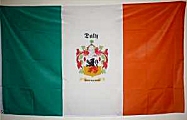
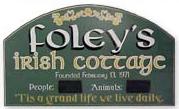
====================
THE HYNES OF IRELAND
by James Patrick Hynes
====================
|
A Hynes progenitor, King Guaire of Connaught, like so many of the ancient Irish kings, could ingeniously and inventively trace his ancestry back to Adam and Eve and although that process of genealogical perfection has been lost, his ancestors have been traced back to Eochy Muigh (Yohee Mew) or Moyvane, father of the celebrated Niall of the Nine Hostages, who ruled Connaught between AD 358 and AD 365. Eochy, who was known as the 'Lord of the Slaves', is said to have had three sons, Brion , Ailella and Fiachra whose descendants were correspondingly: the Ui Briuin , the Ui Ailella and the Ui Fiachrach.
Prince Fiachra commanded the army of Niall when he defeated the Munster forces thereafter exacting the Nine Hostages. Their treachery eventually brought about Fiachra's death, having him buried alive in Moy Goish in Westmeath. Fiachra, of 'the Flowing Hair', had five sons, the most famous of whom was Dathy, so called because he could arm himself very quickly and he was an ancestor of the O'Heynes, O'Clearys, O'Shaughnessys, Kilkellys, O'Cahills, O'Cahans and others. Among the Ui Fiachrach of the south, the Ui Fiachrach Aidhne (Hyne) the O' Heyne and O'Shaughnessy played prominent roles as kings and princes for many centuries. Their traditional territory, Clar Aidhne or Hynes Meadow lay between Clarina, near Limerick in the south, and Athenry in the north. A topographical poem refers to the "O'Heynes of beautiful slender steeds whose pride is defended by their arms. " The most photographed castle in Ireland, Dunguaire, was a principal site of their ancestor's palace, the 'White sheeted fort of soft stones built by Guaire the Generous, King of Connaught, on a promontory in Kinvara, Galway Bay. The present castle, built in 1520 by Owen, Flann or Edmund O'Heyne has been restored and is open to visitors. It is one of at least nine O'Heyne fortifications in the district. During the summer months medieval-style banquets are held there commemorating, in their way, the seventh century Miracle of Dishes, when during one Easter Day, the food was miraculously borne through the air across the Burren to St. Colman MacDuagh and his starving servant. In 1584, Owen Murtagh (the Toothless) O'Heyne was living in Dunguaire and after his death in 1588, his successor, Hugh Buidhe (the Yellowhaired) O'Heyne occupied this fortified house. The O'Heyne resistance to English rule cost them dearly, so Hugh surrendered his land on a grant / regrant basis to Queen Elizabeth as did many an Irish chieftain of that time. His action was unpopular among his kinsmen who had turned down proffered English titles choosing instead to use the ancient title of Ui hEidhne: The O'Heyne. The O'Heyne were long time herenachs or sponsors of the abbey at Kilmacduagh in the famous Burren, County Galway. There may be found the tallest monastic tower in Ireland and it leans like the tower of Pisa! Within the monastery grounds lie the ruins of Hynes Abbey and the O' Shaughnessy cathedral and the grave of the family patron saint, St, Colman MacDuagh commemorated in a mural in Galway's city cathedral. Among people with the surname are to be found the following persons. Samuel Hynes, Woodrow Wilson Professor of Literature Emeritus at Princeton University and the author of several major works of literary criticism. John B. Hynes, a former mayor of Boston whose name is commemorated in the Hynes Convention Centre. Antonio O Heyne, Captain in Spanish service; born Diocese of Kilmacduagh, Ireland, sponsor for Miguel Knaresborough, Madrid,1772 who was entering Spanish service. Don Domingo O Heyne, of Caherillan Castle, was also a Capiain serving the Spanish King. Jack Hynes [Jack the Connaught Ranger) whowrote the book, Flashes from Cape Diamonds, a book of humour. South Africa, 1905. Captain J. Hynes, a Confederate hero in America. Elizabeth Hynes, 1652, in England, tried as a witch, 'employed two evil spirits, one in the likeness of a kittling'! Gladys Hynes, 1888, who carved statute of Our Lady in a Dominican Priory, London Frank Hynes who worked with Liam Mellows ( executed in 1922) John F. Hynes, Volunteer in the occupation of the GPO ,Dublin Captain Hines, once a Royalist in the English Civil War, became a highwayman and more...I should be glad to receive correspondence! A comprehensive history of the clan can be found in the book, 'The Hynes of Ireland', by James Patrick Hynes. It is a history of the battles, murders, duels, conflicts, love stories, poems, castles, monasteries and miracles involving the ancient Hynes family and their kinsfolk, the other descendants of King Guaire, the O'Shaughnessys, O'Clearys, O'Cahans, O'Cahills and Killikellys. Their ancient friends and foes are mentioned too: among them - the Berminghams, Burkes, De Lacys, Fitzgeralds, Gregorys, Martins, MacDermots, MacFirbis's, MacNamaras, O'Briens, O'Connors, O'Donnells, O'Dowds, O' Flahertys, O'Kellys, O'Loughlins, O'Moghans and O'Neills. Researchers into family history will find a wealth of intriguing information about these families which has hitherto been hidden away in obscure papers and documents. The book is available from the publishers, Countyvise, from and through Amazon, from www.localbooks.ie in Ireland and others. James Patrick Hynes |
KEEP THIS NEWSLETTER ALIVE! Visit https://www.irishnation.com
========================================
GENERAL MICHAEL COLLINS.
FIRST COMMANDER IN CHIEF OF THE IRISH ARMY
by Captain Donal Buckley
========================================
|
Much, so much has been written about this legend of a man and when you get to know about him you will realise why.
In the Revolutionary years of 1912-1922 Collins emerged as a power house whose motivation was the liberation of Ireland through any means. He proved to be a superb leader, physically fit, sharp as a blade and extraordinarily energetic. He motivated people to do extraordinary things and commanded amazing loyalty. He realised that freeing Ireland from English control by force could never happen in a conventional conflict and he developed the intelligence war combined with a guerilla war that brought both operations to a new level. His first strategy was to prevent the British from gathering intelligence. This was traditionally done by the police, the Royal Irish Constabulary (RIC), both by the village cop and the G Division which was the political branch of the Dublin Metropolitan Police (DMP) who specialized in monitoring potential revolutionaries. He led a two pronged attack on the RIC and the DMP by intimidating or killing them and by having much of Irish society ostracizing them. 
This was successful. The British government responded by bringing in two extra forces both generally recruited from the officers and soldiers who had returned from the trenches of the Great War. These men who had returned home not to 'a land fit for heroes' as had been promised but to unemployment, post-traumatic stress disorder and frustration. The first group to be recruited was to strengthen the ranks of the RIC. These men came from enlisted ranks and in the haste to recruit them they were issued initially with a combination of military and police uniforms, khaki and bottle green combinations which at first glance appeared to be black and tan in color, thus earning the title 'Black and Tans'. They were well paid, badly led, badly disciplined, very fond of alcohol and violence and were like fish out of water in this new and hostile Irish environment. The second group known as Auxiliaries (Auxiliary Division RIC) that were recruited were ex-Commissioned Officers and operated in mobile columns, independently of the RIC and British Army. They were tough, violent, better paid and utterly undisciplined. The regular British forces did not like them while the Old IRA, Collins men, feared and respected them as a formidable enemy. The Black and Tans and the Auxiliaries are often confused in Irish historiography. Collins second strategy was to develop the guerrilla war. Guerrilla warfare has been about since the beginning of time but this was the first time that this type of war was fought in the technological age. As the Irish tactics developed with attacks on soft skinned and later armored vehicles, the British responded by upgrading their tactics and procedures and so new levels of insurgency and counterinsurgency were developed and written and entered into military doctrine. Lessons learned by British forces were later to be employed in colonies such as Burma in the 1930's and were used against the Germans in occupied France and elsewhere by the SOE (Special Operations Executive). In 1921 a truce was called and a negotiated settlement was reached giving much of Ireland self rule and limited independence for the first time in her history.. Tragically the treaty did not suit all Irish people and a Civil War was fought from 1922 to 1923 by those who opposed the Treaty. In August 1922 General Collins went to his native Cork to talk to his opponents and to bring an end to hostilities. While on this tour he was killed in an ambush at a place called Béal na mBláth, not far from his own home. Captain Donal Buckley Military Heritage Tours  Captain Donal Buckley MA (Hist) (Retd) served in the Defence Forces as an Infantry officer. Most of his service was in the Border area and he also served two tours of duty with peacekeeping battalions in South Lebanon (UNIFIL) and a tour as a Military Observer in Western Sahara (MINURSO). He has an abiding interest in all matters military and historical. This August will be the 90th Anniversary of his death and Military Heritage Tours will mark the anniversary by bringing people on tour to study the history and tactics of the War of Independence and the how and where General Collins and the Old IRA operated in these troubled times. We will bring you to where the fighting took place, we will bring you to where Collins was born, raised and killed in action. We will also bring you to the 90th Anniversary Commemoration to hear the Irish Prime Minister deliver the oration. We will also spend time in Dublin and visit areas where the 1916 Rising took place prior to the War of Independence. Find out more at www.militaryheritagetours.com |
==============================
YOUTUBE VIDEOS OF IRISH INTEREST
==============================
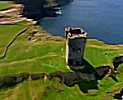
This video is a whirlwind flight around the very
best of Irish scenery, lakes, castles, mountains.
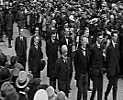
Original footage from the funeral of Michael Collins in 1922.
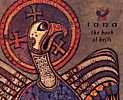
Documentary about the famous Book of Kells.
===========================================
SHAMROCK SITE OF THE MONTH: CELTICATTIC.COM
===========================================
Shop online for everything you need to decorate
your home and life with a Celtic Twist: Art,
Crafts, Irish & Scottish Baskets, Suncatchers,
Wind-Chimes, Music and Celtic Gifts. We offer a
delightful variety of Celtic Jewelry: Pendants,
Crosses, Rings, Hair Ties & more. All your
Irish Bath, Beauty and Herbal needs are in one
convenient location! The Majority of our products
are Irish, Scottish, Welsh made.
Get Free Shipping on most orders! Get a Free Gift
with each and every order.
http://www.celticattic.com
Phone orders 360-286-2307
===========================
GAELIC PHRASES OF THE MONTH
===========================
PHRASE: Ni h-e la na baisti la na bpaisti
PRONOUNCED: nee hay law na bawshtee law na bawshtee
MEANING: A rainy day isn't a day for the children
PHRASE: Is e do bhaile do chaislean
PRONOUNCED: iss ay duh vol-yah duh cosh-lawn
MEANING: Your house is your castle
PHRASE: Tir gan teanga, tir gan anam
PRONOUNCED: teer gon tyong-ga, teer gon on-umm
MEANING: A country (land) without a language, a country without a soul
View the archive of phrases here:
https://www.ireland-information.com/irishphrases.htm
==================
COMPETITION RESULT
==================
The winner was: kathrynmcdonald@eastlink.ca
who will receive the following:
A Single Family Crest Print (decorative)
(US$19.99 value)

Send us an email to claim your print, and well done!
Remember that all subscribers to this
newsletter are automatically entered into the
competition every time.
I hope that you have enjoyed this issue.
Until next month,

Michael Green,
Editor,
The Information about Ireland Site.
https://www.ireland-information.com
Click here to contact us